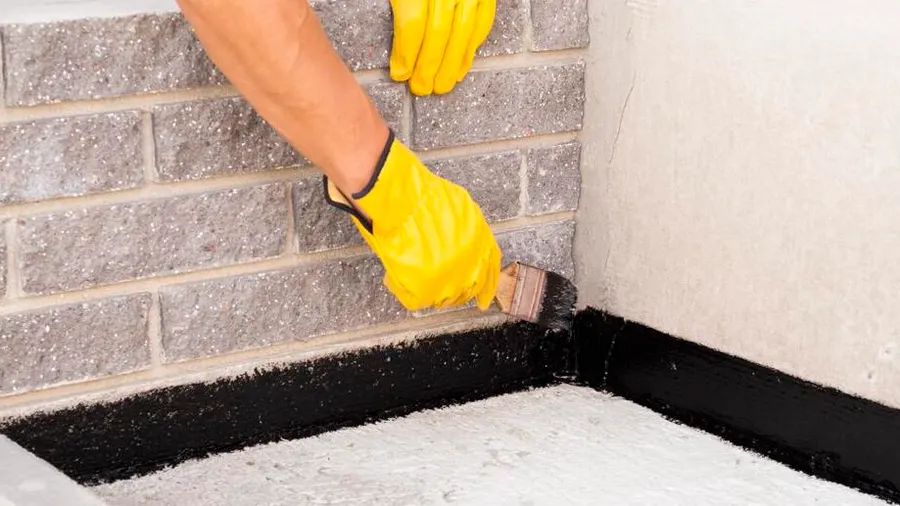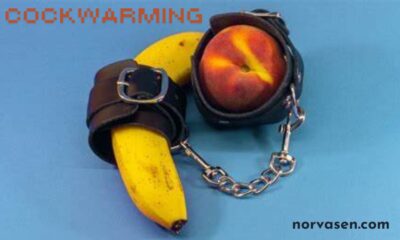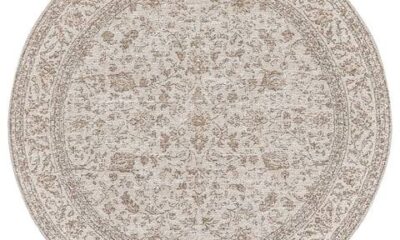Home Improvement
Basement Waterproofing Techniques: Ensuring a Dry and Safe Basement

Introduction
Basement waterproofing is an essential aspect of home maintenance that ensures the longevity and structural integrity of a building. A dry, well-maintained basement provides a healthy living environment and can be a valuable addition to any home. However, basements are prone to moisture problems due to their below-ground location. These issues can lead to mold growth, structural damage, and a host of other problems if not addressed promptly. In this comprehensive guide, we will explore various basement waterproofing techniques, the importance of moisture control, and effective solutions for maintaining a dry and safe basement environment.
Understanding Basement Waterproofing
Basement waterproofing Pembroke involves techniques and materials designed to prevent water from entering the basement. Proper waterproofing helps avoid water damage, mold growth, and structural issues, making it crucial for homeowners. There are two primary types of basement waterproofing: external and internal.
External Waterproofing
External waterproofing focuses on preventing water from penetrating the basement walls from the outside. This approach is proactive, addressing potential water intrusion before it becomes a problem.
1. Exterior Drainage Systems
Exterior drainage systems, also known as French drains or weeping tiles, are installed around the perimeter of the house. These systems collect water and direct it away from the foundation, preventing water from seeping into the basement. Typically, a trench is dug around the foundation, and a perforated pipe is installed, covered with gravel, and connected to a sump pump or drainage system.
2. Waterproof Coatings
Waterproof coatings are applied to the exterior walls of the basement to create a barrier against water intrusion. These coatings are usually made of cementitious materials, asphalt, or polymer-based substances. The application involves cleaning the walls, repairing any cracks, and applying the coating in multiple layers to ensure a watertight seal.
3. Exterior Membranes
Exterior membranes are flexible sheets applied to the outside of the basement walls. These membranes act as a barrier to prevent water from penetrating the foundation. They are typically made of rubberized asphalt, PVC, or other waterproof materials. The installation involves attaching the membrane to the walls, sealing it at the seams, and sometimes combining it with a drainage system for added protection.
Internal Waterproofing
Internal waterproofing methods focus on managing water that has already entered the basement. While this approach doesn’t prevent water from entering, it helps control and redirect it to minimize damage.
1. Interior Drainage Systems
Interior drainage systems, often called French drains or interior weeping tiles, are installed along the perimeter of the basement floor. These systems collect water that seeps through the walls or floor and direct it to a sump pump, which then pumps the water out of the basement. The installation typically involves digging a trench, placing a perforated pipe, and covering it with gravel before replacing the concrete floor.
2. Sealants and Epoxy Injections
Sealants and epoxy injections are used to fill cracks and gaps in the basement walls and floor. These materials prevent water from seeping through small openings and help maintain a dry basement. Sealants are typically applied to the surface of the walls and floor, while epoxy injections are used to fill deeper cracks and provide structural reinforcement.
3. Sump Pumps
Sump pumps are essential components of interior drainage systems. They are installed in a sump pit, which collects water from the interior drainage pipes. When the water level in the pit reaches a certain point, the sump pump activates and pumps the water out of the basement, typically through a discharge pipe leading outside the house.
The Importance of Moisture Control
Effective moisture control is critical for preventing water-related issues in basements. Excess moisture can lead to mold growth, structural damage, and poor indoor air quality. Understanding the sources of moisture and implementing proper control measures can help maintain a dry and healthy basement.
Common Sources of Basement Moisture
1. Groundwater
Groundwater is one of the most common sources of basement moisture. When the water table rises, water can seep into the basement through cracks and gaps in the foundation. Proper drainage systems, both external and internal, are essential for managing groundwater intrusion.
2. Rainwater and Surface Water
Rainwater and surface water can accumulate around the foundation, leading to basement moisture problems. Improper grading, clogged gutters, and inadequate downspouts can contribute to water pooling near the foundation. Ensuring proper drainage and directing water away from the house can help mitigate this issue.
3. Humidity
High humidity levels in the basement can lead to condensation and moisture buildup. Poor ventilation and lack of dehumidification can exacerbate this problem. Installing dehumidifiers and ensuring proper airflow can help control humidity levels and prevent moisture-related issues.
Effective Moisture Control Strategies
1. Proper Grading and Landscaping
Ensuring that the ground slopes away from the foundation is crucial for preventing water accumulation around the house. Proper grading directs water away from the basement, reducing the risk of water intrusion. Additionally, landscaping features such as swales and berms can help redirect surface water away from the foundation.
2. Gutter and Downspout Maintenance
Regular maintenance of gutters and downspouts is essential for preventing water from pooling around the foundation. Cleaning gutters, ensuring proper downspout extensions, and checking for leaks can help keep rainwater away from the basement.
3. Dehumidification and Ventilation
Maintaining proper humidity levels in the basement is key to preventing moisture buildup. Using dehumidifiers to control humidity and ensuring adequate ventilation can help keep the basement dry. Properly ventilating the basement also helps improve indoor air quality and reduces the risk of mold growth.
Common Waterproofing Materials and Techniques
Several materials and techniques are used in basement waterproofing to create effective moisture barriers and prevent water intrusion.
Waterproofing Materials
1. Cementitious Waterproofing
Cementitious waterproofing involves using cement-based products to create a waterproof barrier. These materials are applied to the interior or exterior surfaces of the basement walls and floor. They are easy to apply and provide a durable, long-lasting solution for preventing water intrusion.
2. Asphalt-Based Waterproofing
Asphalt-based waterproofing materials are commonly used for exterior waterproofing. These materials create a flexible, waterproof barrier that can withstand temperature changes and ground movement. They are typically applied in multiple layers to ensure a watertight seal.
3. Polymer-Based Waterproofing
Polymer-based waterproofing materials, such as liquid membranes and sheet membranes, provide excellent flexibility and durability. These materials are applied to the exterior or interior surfaces of the basement and create a seamless, waterproof barrier. They are particularly effective for addressing small cracks and gaps in the foundation.
Waterproofing Techniques
1. Crack Injection
Crack injection is a technique used to fill and seal cracks in the basement walls and floor. Epoxy or polyurethane materials are injected into the cracks, providing a watertight seal and structural reinforcement. This method is effective for preventing water intrusion through small openings.
2. Exterior Wall Excavation
Exterior wall excavation involves digging around the foundation to expose the basement walls. Waterproof coatings or membranes are then applied to the exterior surfaces, creating a barrier against water intrusion. This technique is particularly effective for addressing severe water problems and ensuring long-term protection.
3. Interior Drain Tile System
An interior drain tile system is installed along the perimeter of the basement floor to collect and redirect water. The system typically includes a perforated pipe, gravel, and a sump pump. This technique helps manage water that has already entered the basement, preventing it from causing damage.
Maintaining a Dry and Safe Basement
Implementing proper basement waterproofing techniques and moisture control measures is essential for maintaining a dry and safe basement environment. Regular maintenance and timely repairs can help prevent water-related issues and ensure the longevity of the basement.
Regular Inspections and Maintenance
1. Inspecting for Cracks and Damage
Regularly inspecting the basement walls and floor for cracks and damage is crucial for early detection of potential water problems. Addressing cracks and gaps promptly can prevent water intrusion and structural issues.
2. Cleaning Gutters and Downspouts
Regularly cleaning gutters and downspouts helps prevent water from pooling around the foundation. Ensuring that downspouts are properly extended and directing water away from the house is essential for effective moisture control.
3. Monitoring Humidity Levels
Monitoring and controlling humidity levels in the basement can help prevent moisture buildup and mold growth. Using dehumidifiers and ensuring proper ventilation are effective strategies for maintaining a dry and healthy basement.
Timely Repairs and Upgrades
1. Addressing Foundation Cracks
Repairing foundation cracks promptly is essential for preventing water intrusion and structural damage. Using crack injection techniques or other suitable methods can provide a long-lasting solution for addressing cracks.
2. Upgrading Drainage Systems
Upgrading or installing effective drainage systems, both external and internal, is crucial for managing water intrusion. Properly designed and maintained drainage systems can help keep the basement dry and prevent water-related issues.
3. Enhancing Waterproofing Measures
Enhancing existing waterproofing measures, such as applying additional coatings or installing new membranes, can provide added protection against water intrusion. Regularly reviewing and upgrading waterproofing measures can help maintain a dry and safe basement environment.
Conclusion
Basement waterproofing is a critical aspect of home maintenance that ensures the longevity and structural integrity of a building. Understanding the various waterproofing techniques, the importance of moisture control, and effective solutions for maintaining a dry basement can help homeowners protect their investment and create a healthy living environment. By implementing proper waterproofing methods, regularly inspecting and maintaining the basement, and addressing issues promptly, homeowners can ensure a dry, safe, and comfortable basement for years to come.
Home Improvement
Reasons to Hire Professional Junk Removal for Your Home Renovation

Embarking on a home renovation project can be an exhilarating yet daunting process, with many homeowners overlooking the inevitable accumulation of debris and unwanted materials. Efficient junk removal is a crucial component of a successful renovation, ensuring your work area is safe and clutter-free. Whether tearing down walls or updating fixtures, the waste generated can quickly become overwhelming. Professional junk removal companies provide the necessary means to keep your renovation organized and on track. Below, we explore the benefits of enlisting expert services for your home cleanout tasks.
Ensuring Safety and Compliance with Professional Junk Removal
Renovation projects can create hazardous environments if waste is not managed properly. Sharp debris, heavy materials, and potentially dangerous substances all pose serious safety risks. Hiring professionals for junk removal ensures these threats are handled correctly, reducing the chance of accidents or injuries.
Beyond safety, proper disposal is essential to stay compliant with local laws. Companies offering junk removal in Fort Collins, CO, are familiar with state and municipal regulations, use the right equipment and techniques to remove waste responsibly. Their services reflect a strong commitment to both safety and environmental care.
The Importance of Efficient Debris and Junk Removal During Home Renovations
Home renovations often produce large amounts of waste, including construction debris, old appliances, and personal items. If not properly managed, this clutter can hinder workflow, delay progress, and create safety hazards for contractors. Maintaining a clean and organized site is key to keeping renovations efficient and on schedule.
Professional junk removal services play a vital role by regularly clearing debris, allowing work to continue without interruption. These services also sort materials for recycling or donation, minimizing environmental impact. For homeowners, handling debris alone can be overwhelming and time-consuming, making professional help a practical choice that eases the burden and supports a smoother renovation process.
Streamlining Your Renovation Project with Professional Junk Hauling Services
Integrating professional junk hauling services into a renovation plan helps streamline operations by allowing construction teams to concentrate on building tasks without the distraction of waste removal. These services bring the necessary equipment and expertise to handle heavy or awkward debris efficiently, reducing strain on renovation crews.
A structured disposal approach also aids in cost control, as many companies provide upfront pricing based on volume or material type, helping homeowners avoid unexpected expenses. Junk removal teams ensure safe, efficient handling of discarded materials, maintaining workflow and project timelines. Their involvement supports a cleaner, safer site and allows homeowners to focus on design choices rather than logistics.
Enhancing Your Home’s Aesthetics and Value through Expert Cleanout Solutions
A clean, well-maintained renovation site significantly enhances both the visual appeal and efficiency of a project. Clutter and debris not only disrupt progress but also diminish the workspace’s appearance. Professional junk removal services help maintain order by promptly clearing waste, highlighting the renovation’s progress.
The property’s exterior also benefits, as a tidy environment boosts curb appeal and suggests careful project management, positively influencing perceived value. Removing old or unused items creates more functional space, making it easier to plan and implement design changes. This organized approach also supports long-term upkeep by encouraging homeowners to maintain a clean and well-managed space beyond the renovation phase.
Choosing the Right Junk Removal Company for Your Renovation Needs
Choosing the right junk removal service during a renovation requires careful consideration. Research a company’s experience, customer feedback, and whether they specialize in construction debris, as this can lead to better service tailored to renovation needs. Look for providers with clear pricing and free on-site estimates to avoid unexpected charges.
Evaluate their environmental practices; companies that focus on recycling and donation over dumping contribute positively to sustainability. It’s also important to assess their availability and flexibility, since renovation schedules often change. A provider that can adapt and offer prompt service helps keep the project on track without unnecessary delays.
Altogether, hiring a professional junk removal service for your home renovation project delivers numerous advantages, ranging from enhanced safety and efficiency to compliance and aesthetics. By selecting the right service provider, homeowners can streamline their renovation process and achieve a clutter-free, valuable outcome for their property.
READ ALSO: Save Time and Stress: The Advantage of Professional Junk Removal
Home Improvement
How Junk Removal Services Can Help with Home Renovations

Embarking on a home renovation can be an exhilarating endeavor that breathes new life into your living space. Amidst the excitement and planning, the accumulation of debris and old materials can become an overwhelming byproduct. Fortunately, professional junk removal services play a crucial role in maintaining the cleanliness and organization necessary for a successful renovation. They efficiently strip away the clutter, enabling homeowners to focus on the transformative process. Below, we’ll explore how these services can be integral to your next home improvement project.
Maximizing Space and Minimizing Stress: The Benefits of Professional Junk Hauling
Junk hauling services play a vital role in streamlining home renovations. By clearing out old fixtures, furniture, and debris, they free up valuable space needed for contractors and designers to work efficiently. This space optimization helps keep the renovation on track and allows the vision to take shape without clutter getting in the way.
Beyond just clearing space, professional junk removal in Austin, TX, can ease the emotional and financial strain on homeowners. Quick debris removal reduces stress, speeds up the renovation timeline, and often proves more cost-effective than DIY disposal. With less mess and more progress, homeowners can get back to enjoying their space sooner.
The Role of Junk Removal in Streamlining Home Renovation Projects
Junk removal services are essential during home renovations, helping to maintain a clean worksite and keep the project on schedule. They handle bulky items like old appliances and cabinetry, reducing physical strain on homeowners and renovation teams. These professionals also handle hazardous materials like asbestos or lead-laced paint, adhering to best practices to protect health and ensure regulatory compliance.
The prompt removal of debris by a professional team is reassuring for homeowners, as they can trust their property will be treated with respect and renovation will proceed without unnecessary hindrances caused by accumulated debris. Trusting these professionals ensures a smooth and efficient renovation process.
Enhancing Safety and Efficiency During Renovations Through Debris Removal
Junk removal services are crucial for safety and efficiency on renovation sites, as they help remove hazards like sharp objects, nails, and splintered materials. This reduces the risk of accidents and injuries. Cluttered spaces can impede workflow and extend project timelines, but junk removal experts ensure workers can move freely, allowing for timely completion.
They can handle large-scale waste removal, ensuring no delays in waste management. Professional debris removal also maintains the property’s aesthetic, as it helps maintain neighborhood standards and property values.
How Junk Removal Services Complement Contractor Work on Home Renovation Sites
Contractors can improve the efficiency of home renovations by partnering with junk removal services. Contractors, skilled in construction, electrical work, and plumbing, can’t specialize in waste management. Hiring a junk removal service allows them to focus on their craft without being distracted by cleanup duties.
This synergy leads to a seamless transition from demolition to reconstruction. Junk removal services also offer flexibility, allowing them to adapt to unexpected challenges and changes in waste disposal needs. This ensures that waste is handled responsibly and in compliance with regulations, providing liability protection and avoiding potential penalties or fines.
Transforming Renovation Waste Into Opportunity: Recycling and Donation Options
Sustainability is a growing concern in various industries, including home renovation. Junk removal services help homeowners and contractors make eco-friendly disposal decisions by recycling materials like wood, metal, and plastics. They also offer the option to donate usable materials to local charities or non-profit organizations, promoting a cycle of reuse and sustainability.
Junk removal services often partner with recycling centers and donation facilities, providing transparency and a sense of participation in a healthier planet. By considering environmental and charitable options, junk removal becomes a statement of values, allowing homeowners and contractors to feel pride in repurposing renovation waste in meaningful ways.
Altogether, junk removal services offer indispensable benefits to home renovation projects by promoting efficiency, safety, and eco-responsibility. They not only facilitate the logistical aspects of a renovation but also contribute to the ethical disposal and recycling of materials.
You May Also Like: Save Time and Stress: The Advantage of Professional Junk Removal
Home Improvement
How Junk Removal Services Can Enhance Your Property’s Curb Appeal

First impressions are everything when it comes to real estate. The exterior of your home is the first thing potential buyers see, and its condition can significantly influence their perception of the property’s value. A cluttered yard or an exterior that’s littered with unwanted items can detract from the beauty of a home and even decrease its market value. Fortunately, one effective way to enhance curb appeal is by employing professional junk removal services.
Understanding the Impact of Curb Appeal on Property Value
Curb appeal is not just about aesthetics; it’s an essential factor in establishing property value. A well-maintained exterior signals to potential buyers that a property is cared for, thereby increasing its attractiveness and perceived worth. It’s the first opportunity to showcase the home’s inherent qualities and the homeowner’s attention to detail.
Landscaping, the state of the façade, the condition of the driveway, and the presence of trash or debris all contribute to a property’s curb appeal. When these elements are in disarray, they can suggest neglect and potentially lead to lower appraisal values. A visually appealing exterior is crucial in real estate as it can lead to a higher number of showings and stronger offers from prospective buyers.
Junk Haulers Dallas understands the market dynamics and how removing excess clutter can alter a buyer’s first impression. They can efficiently clear out unnecessary items, ensuring that a property’s exterior presents its best self to potential investors and the community at large.
Enhancing Landscaping and Garden Spaces through Debris Removal
Landscaping plays a vital role in enhancing a home’s curb appeal. However, overgrown gardens, fallen limbs, and scattered yard waste can overshadow the most stunning landscape designs. By removing this debris, homeowners can reveal the true potential of their garden spaces, enabling plants and design features to become prominent.
Junk removal services can aid in turning cluttered and unkempt gardens into tranquil, inviting spaces. The removal of unwanted items provides room for new plants to thrive and can make ongoing garden maintenance significantly more manageable. Clearing away old garden furniture and broken planters also contributes to this transformation, creating a more appealing outdoor environment.
Many homeowners also utilize their gardens and yards for entertainment. A debris-free landscape can enhance the functionality of these areas, making them more conducive for gatherings and relaxation. Uninterrupted lawn spaces and clear garden paths add to the accessibility and enjoyment of outdoor living.
The Visual Benefits of Decluttering Driveways and Walkways
The condition of driveways and walkways significantly affects the overall look of a property. Accumulated items such as old cars, unused tools, and miscellaneous clutter not only restrict movement but also create a sense of disorder. Junk removal services provide a remedy, decluttering these areas to improve the visual flow and accessibility of the home’s exterior.
A decluttered driveway offers a welcoming approach to the home and can convey a sense of spaciousness. Ensuring these pathways are clear can also reduce the risk of accidents and improve the functionality of the space, allowing for smooth ingress and egress for vehicles and pedestrians alike.
Similarly, walkways and sidewalks are integral to the curb appeal of a home. When free from clutter, they guide visitors to the entrance of the home in a manner that is both attractive and safe. Junk removal services can assist with clearing out any obstructions, highlighting the intentional design of pathways, and contributing to the overall cohesion of the landscape.
Increasing Homebuyer Interest With a Junk-Free Property Presentation
A home’s presentation can make or break a buyer’s interest. As real estate markets become ever more competitive, the need to present a property in its best light becomes paramount. Clearing a property of junk can significantly influence a buyer’s opinion, making them more likely to consider purchasing.
When a property is clutter-free, it becomes easier for potential buyers to visualize themselves living there. Junk removal services enable sellers to present a blank canvas, thereby allowing individuals the chance to project their own ideas and preferences onto the space. This personal connection can be a critical element in closing a sale.
Overall, investing in junk removal services is an essential step towards enhancing the curb appeal of a property. It allows homeowners to present a clean and attractive exterior, boosting the potential value of their home and igniting the interest of potential buyers. Altogether, this simple service can yield immense benefits for homeowners looking to improve their property’s marketability.
-

 Education11 months ago
Education11 months agoMastering Excel: Your Comprehensive Guide To Spreadsheets And Data Analysis
-

 Tech1 year ago
Tech1 year agoHow To Choose The Best Forex Trading Broker?
-

 Business1 year ago
Business1 year agoExploring the Rental Market: Properties for Rent in Malta
-

 Blog11 months ago
Blog11 months agoArab MMA Fighters Shine Bright: Meet the Champions of PFL MENA
-

 Travel1 year ago
Travel1 year agoExperience the Best Desert Safari Dubai Offers!
-

 How-To Guides2 years ago
How-To Guides2 years agoComprehensive Guide to Cockwarming: Enhancing Intimacy and Connection
-

 Home Improvement2 years ago
Home Improvement2 years agoEco-Friendly Round Rug Options for Sustainable Living in NZ
-

 Apps and Games2 years ago
Apps and Games2 years agoDiscover Tickzoo: The Ultimate Platform for Video Content Lovers and Creators
